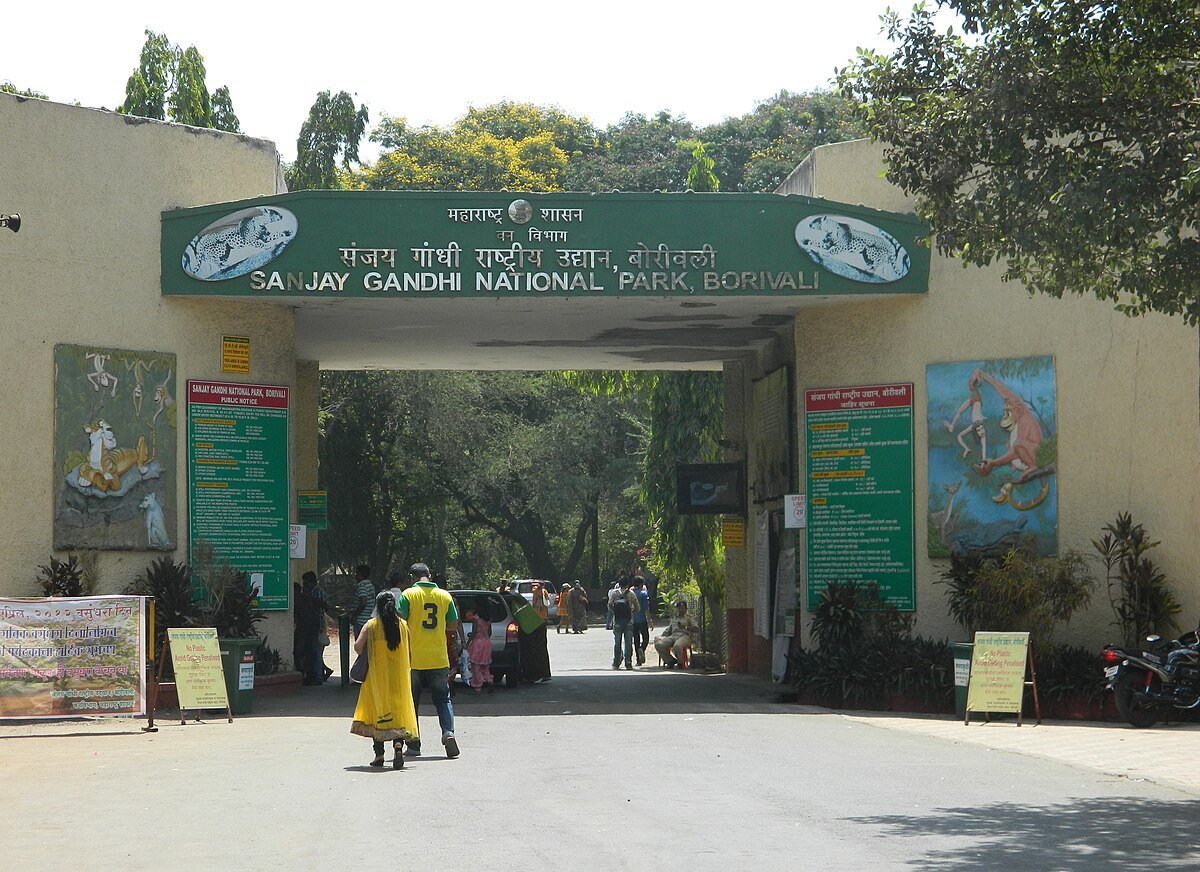Sanjay Gandhi National Park Overview
Sanjay Gandhi National Park, located in Mumbai, India, has a history dating back to the 4th century BC. In ancient India, the ports of Sopoara and Kalyan, near the park, were key trade hubs with civilizations like Greece and Mesopotamia, connected by a 45 km land route that partially traversed this forest. The Kanheri Caves, a significant Buddhist learning and pilgrimage site, were carved by monks between the 9th and 1st centuries BCE from a basaltic rock outcropping in the park’s centre.
Initially named Krishnagiri National Park in the pre-independence era, it covered 20.26 sq. km. In 1969, the park expanded to its current 103 sq. km by acquiring adjacent reserve forest areas. It was formally established as Krishnagiri National Park in 1974, later renamed Borivali National Park, and re-dedicated as Sanjay Gandhi National Park in 1981 in memory of Sanjay Gandhi, son of former Prime Minister Indira Gandhi.

Geographical and Ecological Significance:
Krishnagiri National Park, later renamed Borivali National Park; re-dedicated as Sanjay Gandhi National Park in 1981, spans 103 sq. km and constitutes approximately 20% of Mumbai’s geographical area. Nestled within the Western Ghats biodiversity hotspot, it is a rare urban wilderness, offering scenic valleys, hills, and open expanses. The park is a vital green lung for Mumbai, supporting a wide array of flora and fauna.
Bio-Diversity:
A lot of the wildlife in Sanjay Gandhi National Park is affected by the Sahyadri Hills to the east and the changes that people have made to the area over the years. It is mostly forest habitats that you can find here. There are about 1300 kinds of flowering plants in Sanjay Gandhi National Park. A lot of this forest is like the southern mixed-deciduous forest, which is made up of Tectona, Albizzia, Terminalia, Holarrhena, Firmiana, Dalbergia, Garuga, Grewia, Adina, Ficus, Madhuca, Caraya, Butea, and bamboo. This is most clear in the plains and on the sides of hills.
Some semi-evergreen and evergreen plants can be found on the upper hills and in some of the secluded, narrow valleys and stream beds. There are a few small spots of real Asoca (Saraca asoca) that look magical. They are always dense and a deep green color, which stands out against the falling leaves of the trees around, the flash of a Blue Mormon butterfly, the rambling whistling of a Malabar whistling-thrush, and the fluty notes of a Brown-cheeked Fulvetta.
There is a lot of bamboo, especially in the lower parts, and it's easy to see the teak–bamboo forest community with its unique birds and general make-up. The Karvi (Strobilanthes) is a common shrub that makes up the undergrowth of large parts of this forest. This abundant shrub can be seen all year, even when its stalks are dry in the summer, but it looks its best when it blooms every seven years.
Sanjay Gandhi National Park Plants (Flora):
- Over 1,300 species of plants, contributing to the park’s rich biodiversity within the Western Ghats ecosystem.
- Includes a diverse array of trees, shrubs, and other vegetation, supporting its role as a critical ecological zone in Mumbai.
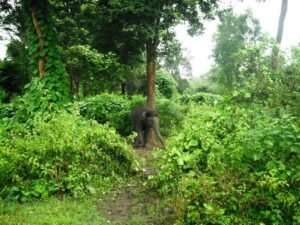
Image Credit: Jaseem Hamza, CC BY 3.0, via Wikimedia Commons
Sanjay Gandhi National Park Animals (Fauna):
- Birds: Over 274 species, a paradise for birdwatchers.
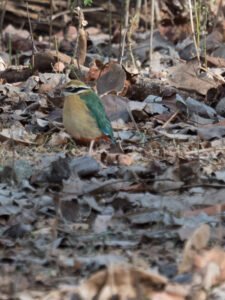
- Mammals: 35 species, including leopards, deer, and monkeys.
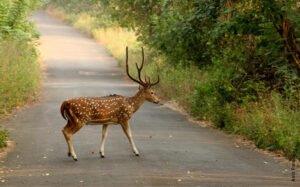
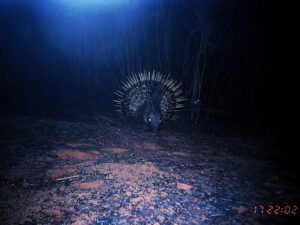
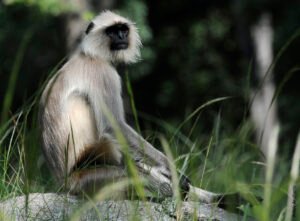
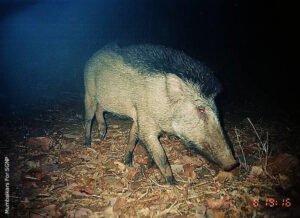
- Reptiles and Amphibians: 78 species, enhancing ecological diversity.
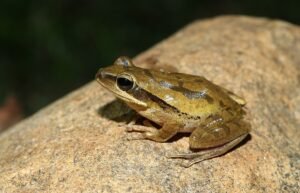
Image Credit: Anagha devi, CC BY-SA 4.0, via Wikimedia Commons

Image credit: Rajesh sanap
- Butterflies: 170 species, showcasing vibrant insect life.
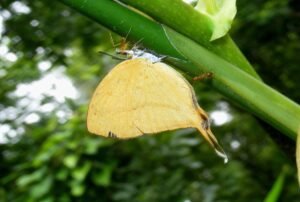
Image Credit:Dr. Raju Kasambe, CC BY-SA 4.0, via Wikimedia Commons
Attractions
Mini Train:
Chug along on the Van Rani mini train, a charming ride weaving through Sanjay Gandhi National Park’s 103 sq. km of lush greenery. This 2.5 km narrow-gauge journey, starting near the main gate, offers stunning views of forests and wildlife, perfect for families. Running daily except Mondays, it’s a hit with kids and adults alike. Established in 1974, the park’s train adds a fun, nostalgic vibe to your visit.
Lakes and Boating:
Tulsi and Vihar Lakes are the park’s serene gems, offering peaceful boating amidst forested hills. Tulsi Lake, a key water source for Mumbai, lets visitors paddle through its calm waters, soaking in nature’s beauty. Boating is available most days, weather permitting, and is a refreshing escape from the city. These lakes highlight the park’s ecological role since its establishment in 1974.
Film Shooting:
With its dramatic hills, valleys, and dense forests, Sanjay Gandhi National Park is a Bollywood favorite for film shoots. Spanning 103 sq. km, its diverse landscapes provide perfect backdrops, but Sunday shootings are restricted due to bustling crowds. Since its founding in 1974, the park’s beauty has drawn filmmakers, requiring special permits to balance tourism and ecology. It’s a cinematic haven in Mumbai’s urban jungle.
Kanheri Caves:
Step back in time at the Kanheri Caves, 109 ancient Buddhist rock-cut caves carved between the 1st and 9th centuries BCE. Nestled in the park’s heart, these monasteries and stupas showcase intricate carvings and spiritual history. Accessible by a short trek or park transport, they’re a cultural highlight of the park, established in 1974. They offer a unique blend of history and nature.
Gardens and Gandhi Smarak:
The park’s vibrant gardens, like the Rose Garden, bloom with colorful flowers, ideal for a relaxing stroll or picnic. The Gandhi Smarak, a memorial to Sanjay Gandhi, adds a heartfelt tribute to the park’s namesake since its renaming in 1981. Easily reachable near the entrance, these spots are open daily for visitors. They’ve been a serene draw since the park’s creation in 1974.
Connectivity:
-
Nearest Airport:
Chhatrapati Shivaji International Airport, just 27 km away, offers easy access to Sanjay Gandhi National Park. Fly into Mumbai and reach this urban wilderness in about 45 minutes by road.
-
Nearest Railway:
Mumbai to Borivali is approximately 34 km by train on the Western Railway route. Suburban trains to Borivali are available on the Western Railway line roughly every 5 minutes.
Climate:
Minimum Temperature: +19°C
Maximum Temperature: +33°C
Sanjay Gandhi National Park is a rare nature sanctuary in the middle of Mumbai's busy city. It has a lot of different kinds of plants and animals, as well as historical sites and fun things to do. With its historic Kanheri Caves, lush forests, wildlife, and calm lakes, the park is a natural gem and a popular place to get away from the city. Sanjay Gandhi National Park offers a lot of green space, a wide range of species, and cultural importance that will last for a long time. You can go there to see wildlife, take a relaxing boat ride, or learn about India's history.
National Parks in India 2025 – Complete List of 107 Beautiful Parks
Top 10 Best Places to Visit in June in South India | Cool Hill Stations & Scenic Getaways


